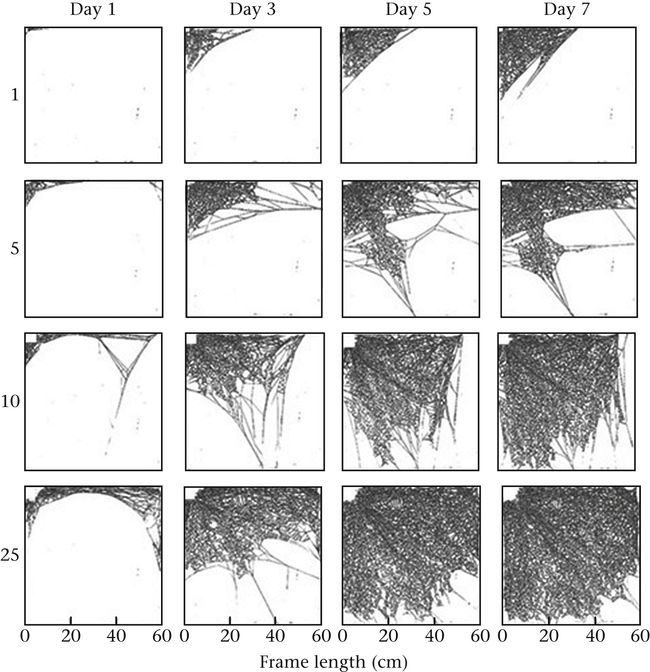Null Exciton-Coupled Chromophoric Dimer Exhibits Symmetry-Breaking Charge Separation
Mahesh Hariharan and Ebin Sebastian
In this paper titled “Null Exciton-Coupled Chromophoric Dimer Exhibits Symmetry-Breaking Charge Separation,” the authors unveil the hitherto unobserved photoinduced symmetry-breaking charge separation (SB-CS) in a Greek cross (+)-oriented spiro-conjugated perylenediimide dimer (Sp-PDI2). The work also established that this highly efficient photochemical phenomenon is assisted by a null exciton coupling in the dimer. Chromophores exhibit null-exciton coupling when the excitons (bound electron-hole pairs) in molecular aggregates are unable to interact with each other. The group had previously studied how an orthogonal arrangement of transition dipole moments can nullify effects of exciton coupling and hence give monomer-like opto-electronic properties to systems which they referred to as Greek cross aggregates. Here, they reinforce the role played by null-exciton coupling in causing a pair of symmetrically disposed identical chromophores to form a charge-transfer excited state, with hole and electron on different chromophores (called SB-CS).

“We have integrated two fundamental concepts, null exciton splitting and symmetry-breaking charge separation, as an innovative strategy to generate an efficient long-lived charge-separated state. The study providing explicit correlation of the relative orientation of the chromophoric system and its frontier molecular orbital interaction in dictating complex excited-state dynamics offers potential design principles for the design of advanced molecular photovoltaics and hence has implications in both fundamental and applied research.” says Ebin Sebastian, one of the authors of the paper.
Surface hopping dynamics reveal ultrafast triplet generation promoted by S1–T2–T1 spin-vibronic coupling in 2-mercaptobenzothiazole
Vennapusa Sivaranjana Reddy, Probal Nag and Chithra M.J.
In a recent paper titled “Surface hopping dynamics reveal ultrafast triplet generation promoted by S1–T2–T1 spin-vibronic coupling in 2-mercaptobenzothiazole,” Dr. Vennapusa Sivaranjana Reddy and his coworkers investigated the T1 (first triplet excited state) formation upon populating the optically “bright” S2 (second singlet excited state) in 2-mercaptobenzothiazole to interpret the underlying relaxation pathways in the compound. The experimental values of decay constants for the relaxation processes were reported earlier by D. Koyama and A. J. Orr-Ewing, Phys. Chem. Chem. Phys., 2016, 18, 26224–26235. The authors compared this data with the results they obtained using ab initio surface hopping dynamics simulations. This theoretical method incorporates quantum mechanical data into molecular dynamics simulations and hence overcomes the limitations imposed by Born-Oppenheimer approximation in traditional MD. For S2–S1 internal conversion (IC) and S1–T2 intersystem crossing (ISC), the estimated decay constants were in perfect agreement with experimental values. In addition, the group could recognise an ultrafast intersystem crossing due to spin-vibronic coupling between S1, T2 and T1 states.

Chithra MJ, one of the authors, explains why the work is significant to the area of Chemical Physics, “We hereby show the importance of theoretical simulations in elucidating the experimental ambiguities. Such high level theory and experiments should go hand in hand for understanding the photophysical processes.”
Galactose Grafted Two-Dimensional Nanosheets as a Scaffold for the In Situ Synthesis of Silver Nanoparticles: A Potential Catalyst for the Reduction of Nitroaromatics
Kaloor S. Harikrishnan, Nithiyanandan Krishnan, Nilima Manoj Kuma, Gowtham Raj, Devanathan Perumal, Jemshiya Kalathil, Jithu Krishna, Reji Varghese
Nanoparticles(NPs) have recently grabbed much attention due to their high surface area, selectivity, and, most importantly, their catalytic activity. However, the main hurdles in nanoparticle (NP) based catalysts are their tendency to aggregate and their recyclability.
The team has used amphiphilicity-driven self-assembly of galactose-hexaphenylbenzene-based amphiphiles into 2D nanosheets. This dense display of galactose sugar is one of their most remarkable structural features. These densely decorated sheets are used to synthesize and immobilize catalytically active AgNPs (silver nanoparticles) by Tollen’s reaction. The catalytic system they synthesized was proven to be very effective in reducing various nitroaromatics. Catalytic activity was noted to be particularly enhanced for immobilized AgNPs than for discrete AgNPs.
The research group led by Dr. Reji was also able to recover this catalytic system from the reaction mixture by ultrafiltration using a membrane filter of appropriate pore size. The activity of the system did not drop even after several recycles. However, the reaction took a long time with increasing recycles, especially because the nanoparticles tended to leach from the sheet surface. This is the first of its kind of report that has successfully demonstrated an in-situ synthesis and immobilization of catalytically active AgNPs onto a nanosheet.
Single-crystal-to-single-crystal synthesis of a pseudostarch via topochemical azide–alkyne cycloaddition polymerization
Arthi Ravi, Amina Shijada and Kana M. Sureshan
Polysaccharides are biomacromolecules in which sugar molecule units are linked via a glycosidic bond with a complicated structure. There is a growing interest to synthesise polymers that mimic these natural polysaccharides.
In this paper, the team led by Prof. Kana M. Sureshan has synthesised a starch-like pseudo polysaccharide by regiospecific single-crystal to single-crystal synthesis. They achieved this by using cyclitol-derived monomers in a topochemical azide-alkyne cycloaddition polymerisation. The monomer was chosen such that while crystallizing, the molecules will arrange themselves in a head-to-tail fashion. Hence, on heating, they undergo polymerisation to give enzyme-stable, crystalline poly-1,4-triazolyl-myo-inositol. This pseudo polysaccharide had successfully mimicked the key properties of natural polysaccharides like stereochemistry, hydroxyl functionality and enzyme stability. This research is the first successful synthesis of a polymer of cyclitol using topochemical polymerisation.

Web architecture, dynamics and silk investment in the social spider Stegodyphus sarasinorum
Thejasvi Beleyur, Tejas G. Murthy, Saurabh Singh, Hema Somanathan, Divya Uma
Many insect species such as ants, wasps, bees and termites are known for the large and elaborate nests they build. A handful of spiders are also known to exhibit sociality, and studying their webs and group dynamics can help improve our understanding of the evolution of collective behaviour. One hypothesis put forward to explain the benefits of sociality in spiders is the silk conservation hypothesis, which posits that the per capita silk investment decreases with increasing group size.
Stegodyphus sarasinorum, aptly called the Indian cooperative spider, is one such social spider that is known to build intricate webs, and was the subject of this study. The spiders of similar size and weight were categorised into groups of different sizes—1, 5, 10, and 25, and housed in a controlled environment. For the next 10 days, the webs built by the spiders were photographed, observed and analysed. Contrary to the silk conservation hypothesis, per capita silk investment remained the same across group sizes. Additionally, their results indicated that group size did not affect coordination number or pore size (both of which indicate web density). The authors acknowledged that the silk conservation hypothesis might be applicable to larger group sizes than those used in the study, and that many other factors might contribute towards the evolution of collective behaviour, such as protection from predators, better survival rates and access to mates.

Summaries from School of Chemistry by Ashley Roby and Hruidya C Babu. Summary from School of Biology by Ira Zibbu.



